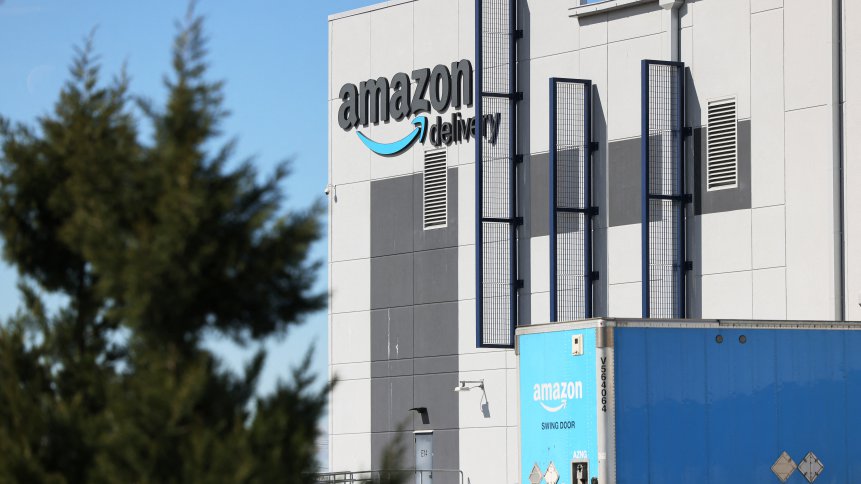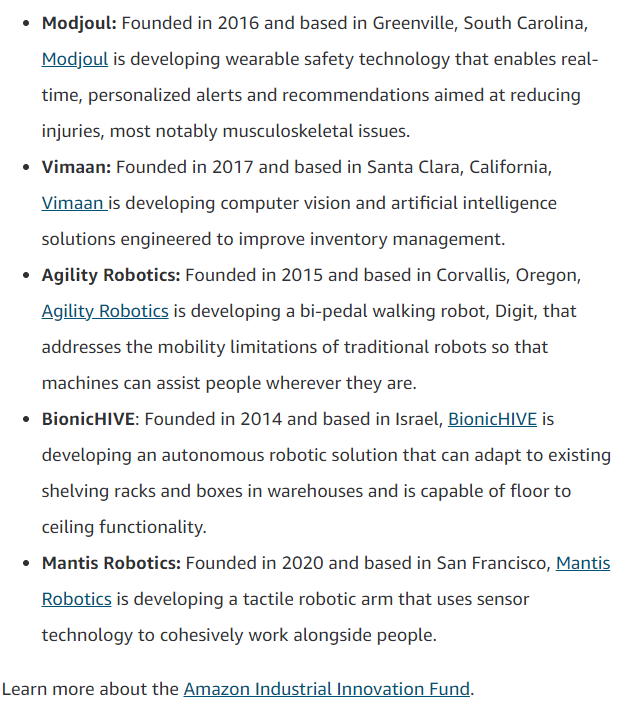Will its innovation roadmap help Amazon improve logistics?

- The new fund by Amazon represents the latest push to use tech innovation to enhance logistics to keep pace with heightened demand for faster deliveries
- The aim is to also empower companies that are developing emerging technologies in customer fulfillment operations, logistics, and the supply chain
- Amazon wants to focus on companies that incrementally increase delivery speed and improve the experience of warehouse and logistics workers
E-commerce giant Amazon.com Inc has historically transformed our expectations on shopping and how we interact with technology. Thanks to the company’s sprawling logistics and delivery empire, its dominance within the global retail sector is almost unbreakable. Yet, when the pandemic struck, Amazon too struggled to meet the soaring demand. Realizing the need to expand and improve its warehouse and delivery system, the company eventually formed the Amazon Industrial Innovation Fund.
On Thursday, the retail giant announced that it is investing US$1 billion “to spur supply chain, fulfillment, and logistics innovation and further improve the customer and employee experience”. The venture investment program known as the Amazon Industrial Innovation Fund, represents the company’s move to go even further into using technology to improve logistics.
It is especially necessary for Amazon since the supply chain crisis is only worsening and on top of that, consumers are concurrently demanding for even faster deliveries. Amazon’s vice president of worldwide corporate development, Alex Ceballos Encarnacion, said in a blog that the fund intends to focus on companies that incrementally increase delivery speed and improve the experience of warehouse and logistics workers.
Ceballos said that Amazon was committed to using its scale to invest in “companies that will ignite innovation in emerging technologies.” He also noted that whether the investments were purely that or they led the portfolio companies to work with Amazon, “we’re excited to help advance these technologies as online shopping becomes even more important to people who are looking for more convenience and time savings.”
Amazon Industrial Innovation Fund’s direction
Historically, Amazon is known for investing in technologies within its operations that support employees and customers, like artificial intelligence, robotics, and other cutting-edge inventions. Some past improvements include robotic arms that perform repetitive tasks and new products in autonomous movement that can help transport larger items.
That said, even with AIIF, Amazon will focus on companies working in those similar areas including machine learning, autonomy, and other emerging technologies. Through its first round of investments, Amazon focused on wearable technology that enhances safety in fulfillment buildings and robotics designed to complement and coexist with people’s lives.

Innovations and the startups behind them. Source: Amazon
Investment size for each company however will vary based on the opportunity and stage of growth. All in all, the entire Amazon innovation roadmap focuses on areas that would perhaps, in turn, change the on-ground situation for hundreds of their employees who have made headlines since the pandemic.
YOU MIGHT LIKE

The robots troubleshooting US supply chain shortfalls
As an analysis piece on Vox puts it, “Amazon’s workplace culture has long centered on “customer obsession” — doing everything and anything to satisfy customers. That mission has led Amazon to become a force of convenience the world has never seen before. Over the last decade, Amazon has outfitted its warehouses with robots, performance-tracking software, and reengineered workflows, all in the name of pushing the limits on what Amazon can offer its customers, and how quickly.”
Unfortunately though, those innovations have also stirred labor issues, “including comparatively high injury and worker churn rates, turning a great American innovation story into a complex evaluation of what it takes to get what we want when we want it — and whether we should expect more from a company that’s setting the bar for what many American employers expect from workers,” Vox added.
Looking back over the past several years alone, Amazon has seen warehouse injury rates above the national averages. A recent report from Strategic Organizing Center, a pro-union organizing group, revealed that Amazon’s warehouse injury rates continue to sit at about double that of its major competitors.
In its October 2021 earnings report, the retail giant even stressed its struggles to recruit enough workers to supply its massive and growing logistics network. The company cited increased labor costs and new hiring incentives as major reasons for high operating costs, on top of the manufacturing issues, chip shortages, and a never-ending supply-chain headache. All of which had eventually impacted the company’s profits.
Although those issues could continue to be a problem for the rest of this year, the innovation fund just might help buffer Amazon from the impacts. “Even as we have continually improved our operations to better the employee experience and enhanced safety through the development of new workstations with better ergonomics, we hope this fund opens the door for more collaboration,” Ceballos concluded.









